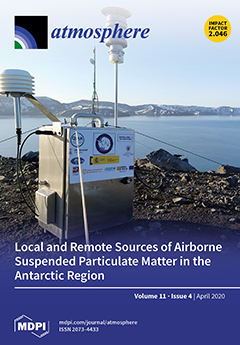Conventional numerical methods have made significant advances in forecasting tropical cyclone (TC) tracks, using remote sensing data with high spatial and temporal resolutions. However, over the past two decades, no significant improvements have been made with regard to the accuracy of TC intensity
[...] Read more.
Conventional numerical methods have made significant advances in forecasting tropical cyclone (TC) tracks, using remote sensing data with high spatial and temporal resolutions. However, over the past two decades, no significant improvements have been made with regard to the accuracy of TC intensity prediction, which remains challenging, as the internal convection and formation mechanisms of such storms are not fully understood. This study investigated the relationship between remote sensing data and TC intensity to improve the accuracy of TC intensity prediction. An intensity forecast model for the South China Sea was built using the eXtreme Gradient Boosting (XGBoost) model and FengYun-2 (FY-2) satellite data, environmental data, and best track datasets from 2006 to 2017. First, correlation analysis algorithms were used to extract the TC regions in which the satellite data were best correlated, with TC intensity at lead times of 6, 12, 18, and 24 h. Then, satellite, best track, and environmental data were used as source data to develop three different XGBoost models for predicting TC intensity: model A1 (climatology and persistence predictors + environmental predictors), model A2 (A1 + satellite-based predictors extracted as mean values), and model A3 (A1 + satellite-based predictors extracted by our method). Finally, we analyzed the impact of the FY-2 satellite data on the accuracy of TC intensity prediction using the forecast skill parameter. The results revealed that the equivalent blackbody temperature (TBB) of the FY-2 data has a strong correlation with TC intensity at 6, 12, 18, and 24 h lead times. The mean absolute error (MAE) of model A3 was reduced by 0.47%, 1.79%, 1.91%, and 5.04% in 6, 12, 18, and 24 h forecasts, respectively, relative to those of model A2, respectively, and by 2.73%, 7.58%, 7.64%, and 5.04% in 6, 12, 18, and 24 h forecasts, respectively, relative to those of model A1. Furthermore, the accuracy of TC intensity prediction is improved by FY-2 satellite images, and our extraction method was found to significantly improve upon the traditional extraction method.
Full article





